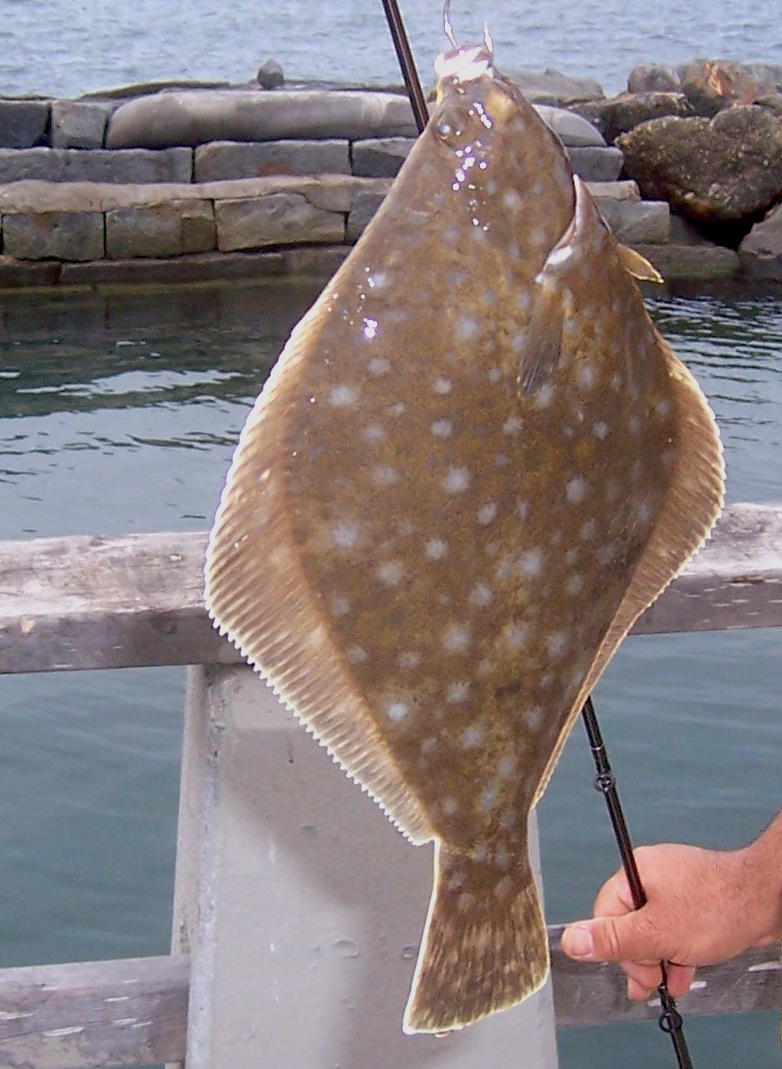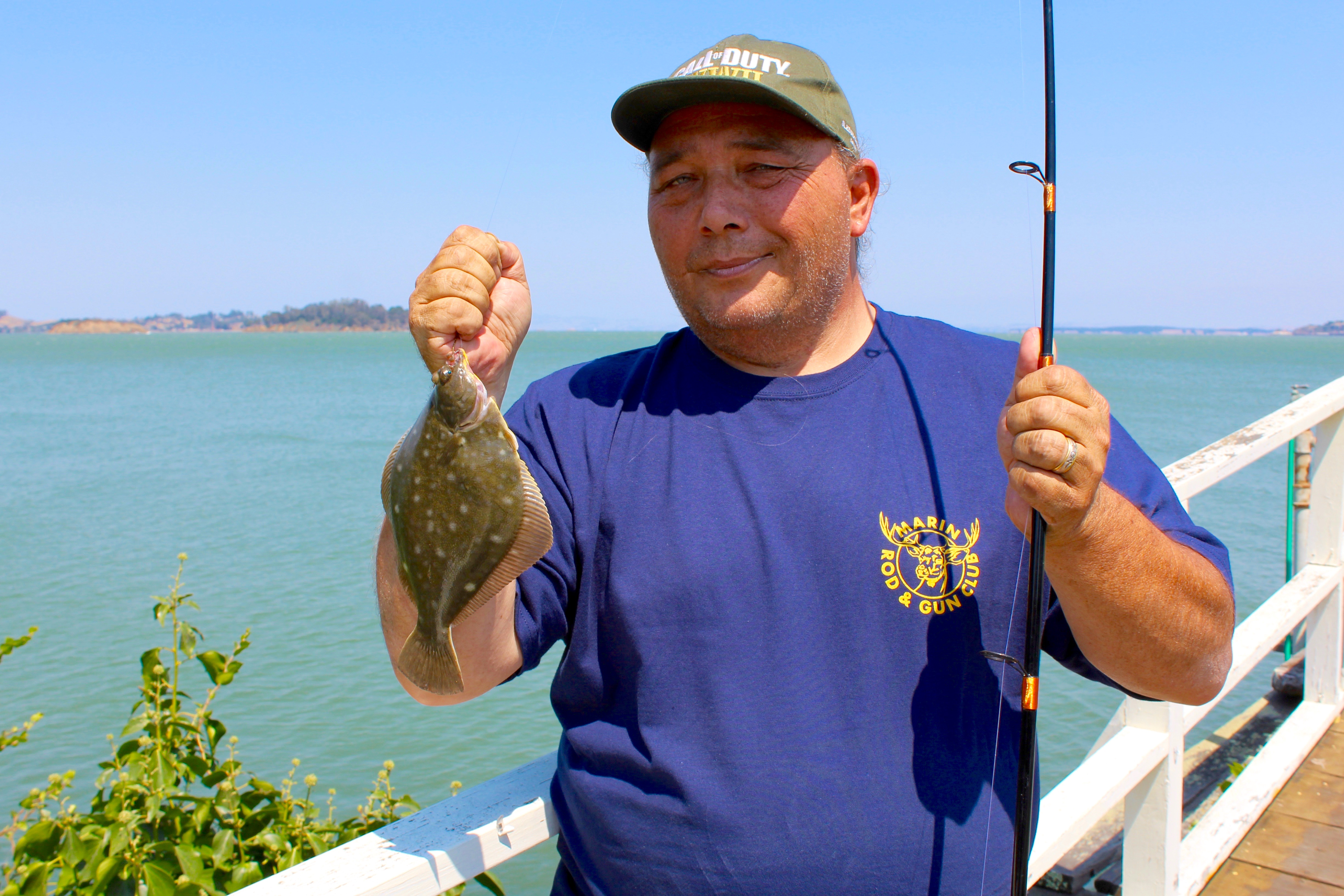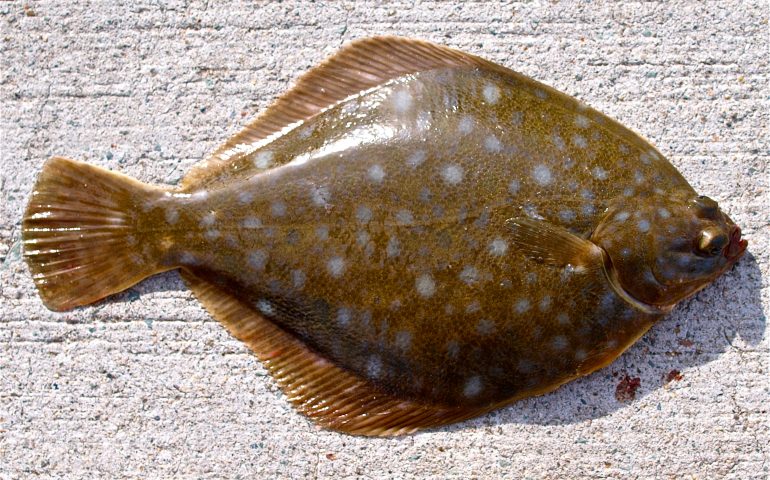Righteye Flounders: Family Pleuronectidae
Species: Hypsopsetta guttulata (Girard 1856); from the Greek word hypsopsetta (deep flounder, referring to the oval shape) and the Latin word guttulata (with small spots).
Alternate Names: Turbot or diamond flounder. Called platija diamante in Mexico.
Identification: Diamond turbot are (surprise, surprise) diamond shaped and a right-eyed member of the flatfish family. They have a small mouth with the dorsal branch of the lateral line extending more than half the distance to the caudal fin. Their coloring is dark gray, brown or green with bright blue round spots on the pigmented side; there is a yellow rim near the mouth on the blind side.

Diamond turbot from the Cabrillo Pier in San Pedro
Size: To 18 inches; most caught off piers are under 12 inches. The IGFA World Record fish is listed at 1 Lb 8 oz and was taken in Newport Harbor in 2015.
Range: Gulf of California, and along the Pacific Coast from Cabo San Lucas, southern Baja California, to Cape Mendocino, northern California. Common from Bahía Magdalena, southern Baja California, to Tomales Bay, northern California.
Habitat: Found from the surf zone down to a depth of 150 feet and especially common in bays, over sand and mud.
Piers: Most common at SoCal piers located in bays but occasionally reported from CenCal piers. Best bets: Bayside Park Pier, Ferry Landing Pier, Shelter Island Pier, Oceanside Small Craft Harbor Pier, Dana Point Harbor Pier, Seal Beach Pier, and the Morro Bay T-Piers.

Diamond turbot from the Marin Rod & Gun Club Pier
Shoreline: A common catch in southern California, especially if fishing in bays.
Boats: Occasionally taken by boaters fishing in southern California bays, Morro Bay and San Francisco Bay.
Bait and Tackle: Diamond turbot are small flatfish, which prefer a small hook and live bait. Bloodworm, lugworms, and small ghost shrimp are the best baits. However, many are also caught on cut anchovy, strips of squid, and pieces of shrimp or clam. Hooks should not be larger than size 4. Although more commonly taken from piers in bays, they can also be caught at oceanfront piers, generally just out past the surf area.
Food Value: Excellent although this is another fish which (since often caught in bays) may be unsafe to eat in areas with heavy pollution. The flesh is white colored, mild flavored, soft in texture, and low in fat content. It is suitable for any method of cooking but perhaps best fried.
Comments: An attractive and good tasting little fish.

[…] Diamond Turbot. We net these native marine flatfish once or twice per year, always as small juveniles, roughly 3 inches or less. They are a common type of flounder in bays in Southern California, just a little less common here. https://www.pierfishing.com/diamond-turbot/ […]
[…] Diamond Turbot. This might be the largest Turbot we have ever caught. Along the coast, they often grow to 18 inches. They are a popular righteye flounder game fish on the coast. https://www.pierfishing.com/diamond-turbot/ […]